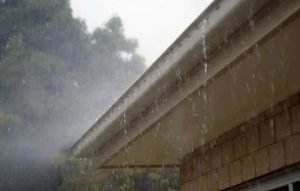Here in San Antonio, we’re no strangers to extreme summertime temperatures. In fact, our city routinely lands within the top ten on lists of “the hottest cities in the United States.” Approximately 116 days out of the year are 90°F or higher, our normal mid-summer high is 97.5°F, and our highest temperature on record was 111°F. Don’t get us started on the humidity.
While it’s easy to see how heat affects things at eye- or ground-level, such as your lawn and garden (and electricity bill), we can often forget about the effects heat can have on the roofs over our heads. Though your roof should be durable and built to last, extreme heat can negatively impact important components of your roofing system over time.
Below is what every homeowner needs to know about extreme heat and their roof.
Thermal Shock
During a summer day, your roof gets hot. How hot, you ask? The Department of Energy reports that standard or dark roofs (as opposed to light or “cool” roofs) can reach a temperature well over 50°F hotter than the temperature outside. This means that if the weather is 98°F, your roof is at least 148°F: that’s more than hot enough to scramble an egg on your shingles!
Your home’s roofing materials expand as they heat up. Then, when the sun goes down and temperatures drop, the materials contract. When these temperature changes occur quickly, your roof’s materials can get strained from continuously expanding and contracting. This stress caused by temperature fluctuations is known as thermal shock.
Roofs become less resilient as they age. Thermal shock can be a factor that makes a roof age faster. In addition, an older roof is more susceptible to permanent damage caused by its materials expanding and contracting. Sometimes a roof will crack or split as the weather heats up. It’s also possible for shingle nails to loosen or for the shingles themselves to warp or curl.
Humidity Issues
As the old saying goes, it’s not just the heat; it’s the humidity! While heat can damage your roof over time, humidity can play a role as well. Generally, high levels of humidity coincide with the hottest months of the year. This is because the air can hold more moisture when it’s warmer than when it’s cooler. For this reason, your roof is more likely to have humidity-related issues during periods of intense heat.
If enough humidity gets trapped inside your attic, it will form condensation on areas such as your roof joists and roof rafters. This condensation can promote wood rot and mold growth. Both are problematic, as they can weaken your roof’s wood and plywood components and threaten its structural integrity. Additionally, mold worsens the air quality inside your home and can lead to both mild and severe health issues.
Preventing Costly Home Repairs
When roof leaks occur, you not only pay for a roof repair or replacement, but you also end up paying to clean up and restore your home’s water-damaged areas. Avoid this stressful situation by getting ahead of roofing issues before they occur.
-
If you spot damage anywhere on your roof, don’t wait to get it fixed. The next time it rains could be the time water finally gets into your home. If you are concerned about budgeting, ask your roofing contractor about what financing options they offer so that you don’t have to postpone an important repair.
-
Check your attic for signs of mold or condensation. If either of these is present, you may need to improve your roofing ventilation system. A dehumidifier for your attic can also be a smart solution.
At Dolan Roofing, we offer free estimates for roofing repairs and special financing in San Antonio. Contact us today to get started!




